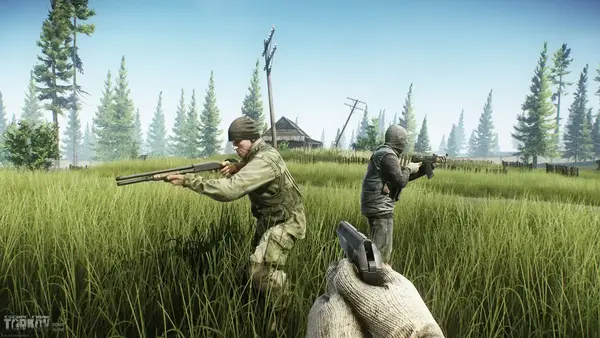Advertisement
Popular Now
Introduction
Escape from Tarkov (EFT) is known for its intense, realistic gunplay and hardcore survival mechanics. However, one persistent issue that continues to frustrate players is desync—a problem where the game’s server and client data do not match, leading to delayed actions, unfair deaths, and unpredictable engagements. This article will explore the root causes of desync, its impact on gameplay, developer responses, and potential solutions. H2: Understanding Desync in Escape from Tarkov
Desync occurs when there is a delay or mismatch between what a player sees on their screen and what is actually happening on the server.
H3: How Desync Manifests in Gameplay
H2: Understanding Desync in Escape from Tarkov
Desync occurs when there is a delay or mismatch between what a player sees on their screen and what is actually happening on the server.
H3: How Desync Manifests in Gameplay
- Players shoot at enemies who appear in one location, but the server registers them elsewhere.
- Items take seconds to appear after looting, causing unnecessary risks.
- Actions such as healing, reloading, or door interactions experience noticeable lag.
- Server overload due to high player traffic.
- Poor internet connectivity or unstable ping.
- Inefficient netcode and synchronization algorithms.
- In the alpha and early beta stages, desync was widespread due to limited server capacity.
- Players experienced severe rubberbanding and unpredictable movement from opponents.
- Battlestate Games upgraded servers and introduced regional matchmaking.
- Despite improvements, large-scale events and high player counts still caused desync spikes.
- Players die behind cover due to delays in server updates.
- Headshots fail to register despite precise aiming.
- Players lose expensive gear due to server-related deaths.
- Looting delays increase the risk of being ambushed by other players.
- Increased server capacity to handle peak-hour loads.
- Improved matchmaking systems to balance regional server distribution.
 H3: Improved Netcode and Patch Updates
H3: Improved Netcode and Patch Updates
- Frequent patches aimed at optimizing data transmission between players and servers.
- Adjustments to prevent server-side lag spikes.
- Competitive players argue that desync makes skill-based gameplay inconsistent.
- Some users resort to quitting after repeated unfair deaths.
- Some players adjust by playing more cautiously, avoiding high-population areas.
- Others attempt to use desync to their advantage by pre-firing or predicting opponent lag.
- Using wired internet connections instead of Wi-Fi reduces packet loss.
- Selecting lower-population servers can lead to a smoother experience.
- Avoiding aggressive peeks and relying on defensive play reduces desync-related deaths.
- Checking corners multiple times accounts for delayed enemy positioning.
- More dedicated servers with better scaling capabilities.
- Dynamic server allocation based on player demand.
- Implementing rollback netcode for more accurate hit registration.
- Reducing data packet delays to improve real-time responsiveness.
 H2: Conclusion
Desync remains one of the most persistent issues in Escape from Tarkov, affecting combat, looting, and overall player experience. While developers have made strides in reducing its impact, complete resolution remains a work in progress. Until then, players must adapt and use workarounds to minimize frustration while hoping for a more stable Tarkov in the future.
H2: Conclusion
Desync remains one of the most persistent issues in Escape from Tarkov, affecting combat, looting, and overall player experience. While developers have made strides in reducing its impact, complete resolution remains a work in progress. Until then, players must adapt and use workarounds to minimize frustration while hoping for a more stable Tarkov in the future. 
















